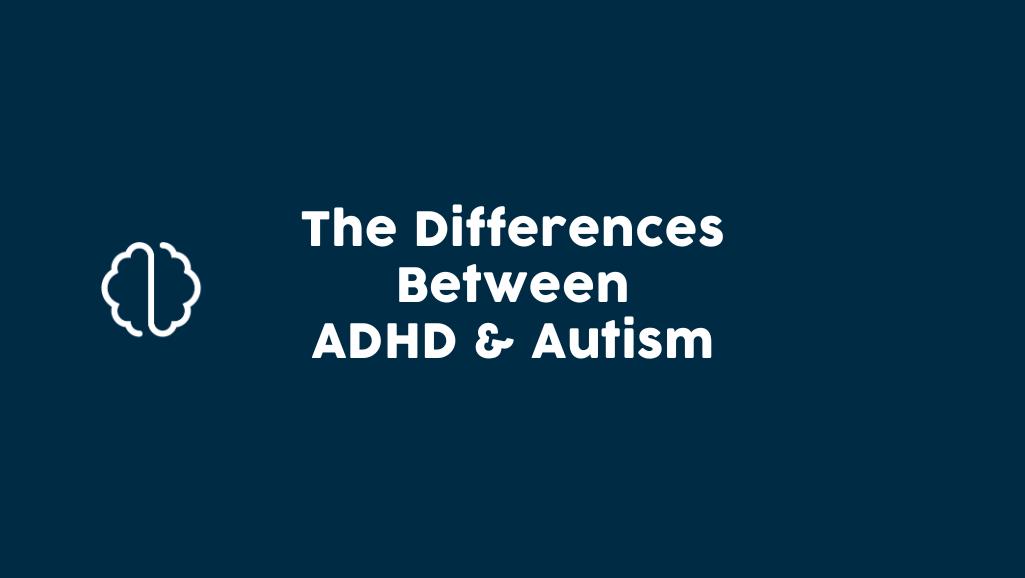In this article
ToggleAttention deficit hyperactivity disorder (ADHD) and autism are both neurodevelopmental conditions – meaning they affect the way the brain works.
ADHD and autism share some similarities (and some people do have both conditions). However, they do have distinct differences and different diagnostic criteria. It’s important to understand the difference between the two conditions and to get a correct diagnosis.
What is autism?
Autism is a neurodevelopmental disability that affects the way people communicate, process information and interact with the world. It involves a series of related developmental disorders that can affect a child’s behaviour, learning ability, language skills and social life.
Autism exists on a spectrum meaning that no two people experience it in the same way. While each person has a unique set of symptoms, it’s common for people to:
- Experience difficulties in social situations
- Display repetitive behaviours
- Have difficulty with emotional regulation
- Have specific, intense interests that they can sustain for long periods of time.
Visit our autism page to learn more
Autism is diagnosed after a comprehensive assessment by one or more healthcare professionals. The assessment involves engaging a child in activities like puzzles, games and pretend play while health professionals observe the child’s behaviour, social skills and communication.
Intriguingly, according to scientific literature, approximately 50-70% of people with autism also have ADHD.
What is ADHD?
People with ADHD have underlying differences in their brain anatomy and function, which can make them inattentive, impulsive or hyperactive. They will usually find it much harder to pay attention, sit still or think before they act.
There are three types of ADHD:
- Inattentive – easily distracted, can’t follow instructions easily
- Hyperactive-impulsive – craves stimulation, doesn’t consider consequences
- Combination – a mix of inattentive and hyperactive-impulsive symptoms.
Visit our ADHD page to learn more
Diagnosing ADHD also involves a comprehensive assessment of factors such as:
- Your child’s age when symptoms began (must be under 12)
- How many inattentive and/or hyperactive-impulsive traits they have
- How long the symptoms have been present (must be at least 6 months and seen in more than one setting, such as home and school)
- The impact on your child’s life.
Comparing and contrasting autism and ADHD
There is an overlap between autism and ADHD. A child with either condition may find it hard to share their toys or wait for their turn when playing a game.
| Aspect/situation | Autism | ADHD |
| Attention span | Concentration depends on interest level:
|
Limited attention span, even when interested.
May try to avoid things that require them to concentrate. |
| Emotional expression & regulation | May find it hard to express their emotions.
May not use gestures or eye contact. |
May talk non-stop and monopolise conversations.
Sometimes, inattention and hyperactivity may make it hard to find the right words. |
| Social situations | May not easily pick up on social cues, may struggle to form relationships. | May struggle to sit still and focus, which can make some social situations difficult. |
| Routines | Likes structure and routine – creates a sense of predictability and safety. May become anxious if their routine changes. | Easily bored by routines. Dislike doing the same thing again and again. |
Treating for autism and ADHD
ADHD and autism are both complex conditions that often require a number of different treatment approaches.
ADHD treatment may include:
- Psychological support
- Educational support
- Medication.
Similar treatments are used for children with autism. However, they may also need additional measures such as speech therapy or occupational therapy.
How can Neurofit Brain Centre help?
At Neurofit, we believe that brain activity makes an active difference. The brain is constantly reprogramming and rewiring based on the stimulation it receives. Our therapies focus on providing the right stimulation to help the brain in the areas where it needs support.
Neurofit Brain Centre’s staff are trained in The Melillo MethodTM. Developed by Dr Robert Milillo, The Melillo MethodTM, is a holistic approach to identifying brain imbalances and treating a wide range of neurological conditions in children and adults.
We use many evidence-based therapies designed to stimulate the chosen area of the brain. Often, we’ll use several of these at once (co-activation) to give the brain maximum opportunity to form new neural pathways and strengthen itself.
We begin with a thorough assessment of your child’s condition and discuss the ways in which it is affecting their life. Then we recommend a treatment program. Our therapies are designed to be engaging and enjoyable (like brain-based video games) so that your child wants to participate.
Disclaimer
All information is general and is not intended to be a substitute for professional medical advice. Neurofit Brain Centre can consult with you to confirm if a particular treatment approach is right for you.
References
- Murdoch Children’s Research Institute, Neurodevelopment, https://www.mcri.edu.au/research/strategic-collaborations/flagships/neurodevelopment#, [Accessed 27 October 2023]
- Neurofit Brain Centre, Autism treatment for kids and adults, >https://neurofitbraincentre.com.au/people-we-support/autism-treatment-for-kids-and-adults/, [Accessed 27 October 2023]
- Raising Children, Autism diagnosis for children: A guide, >https://raisingchildren.net.au/autism/learning-about-autism/assessment-diagnosis/autism-diagnosis, [Accessed 27 October 2023]
- Hours C, Recasens C, Baleyte JM. ASD and ADHD Comorbidity: What Are We Talking About? Front Psychiatry. 2022 Feb 28;13:837424. doi: 10.3389/fpsyt.2022.837424. PMID: 35295773; PMCID: PMC8918663. >https://www.ncbi.nlm.nih.gov/pmc/articles/PMC8918663/#, [Accessed 27 October 2023]
- Neurofit Brain Centre, ADHD treatment for kids and adults, https://neurofitbraincentre.com.au/people-we-support/adhd-treatment-for-kids-and-adults/, [Accessed 27 October 2023]
- Raising Children Network, ADHD in children and teenagers, >https://raisingchildren.net.au/school-age/development/adhd/adhd, [Accessed 27 October 2023]
- Scope Australia, Autism versus ADHD: Explaining the difference between the two: >https://www.scopeaust.org.au/news/autism-vs-adhd-explaining-the-difference-between-the-two# [Accessed 27 October 2023]
- ADHD Foundation, ADHD Medication and treatments, >https://adhdfoundation.org.au/adhd-medication-and-treatments, [Accessed 27 October 2023]
- Neurofit Brain Centre, Digital therapies for kids and adults, https://neurofitbraincentre.com.au/our-services/digital-therapy-for-kids-and-adults/, [Accessed 27 October 2023]








